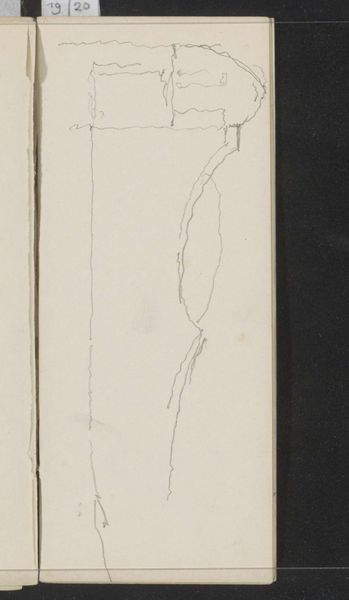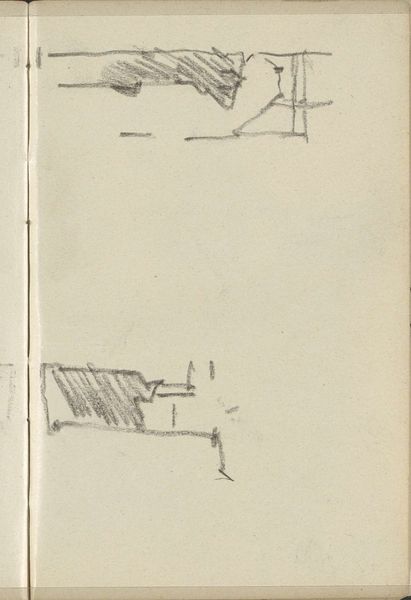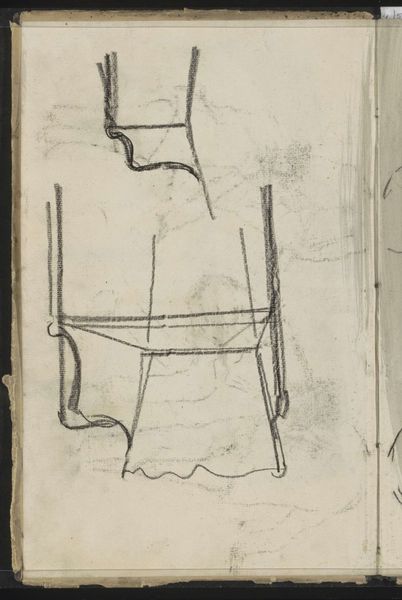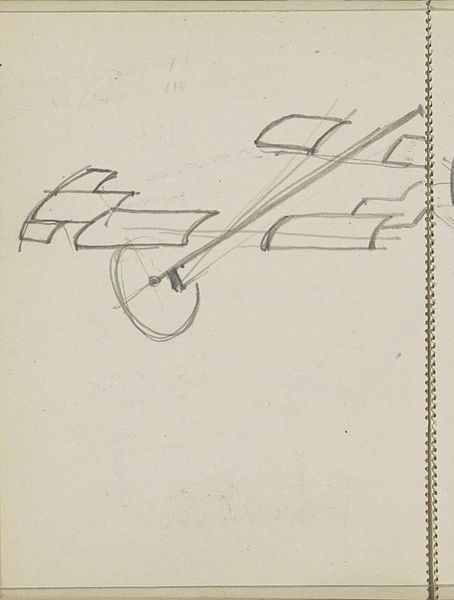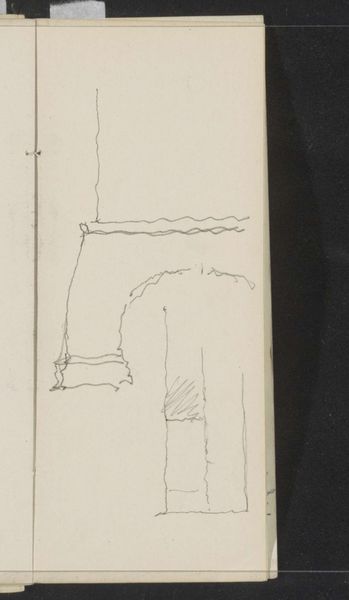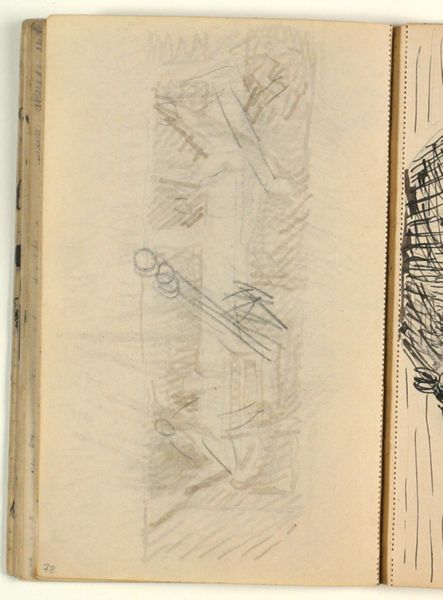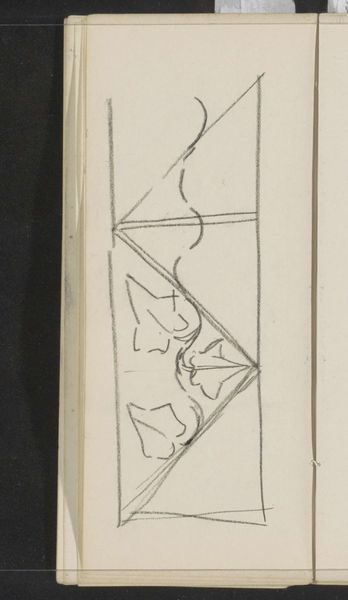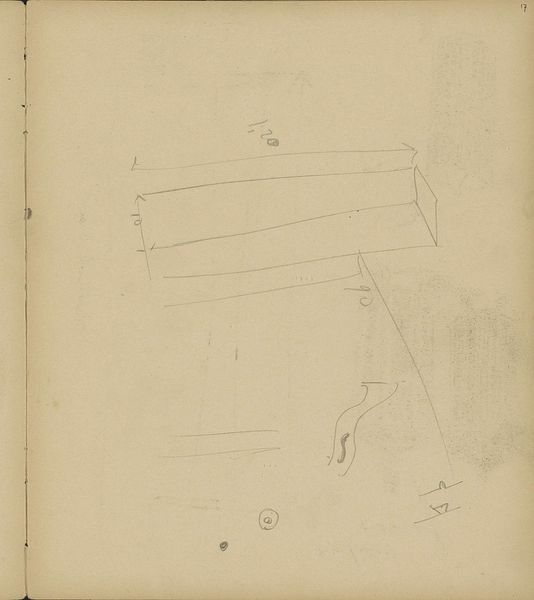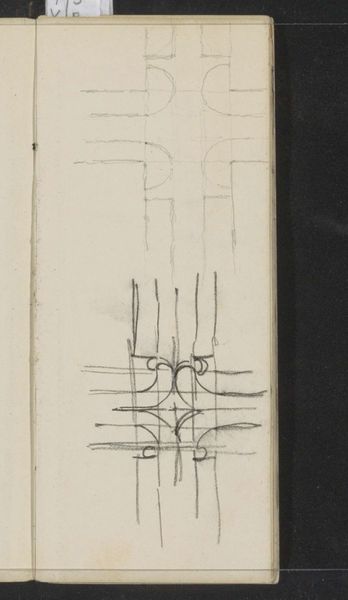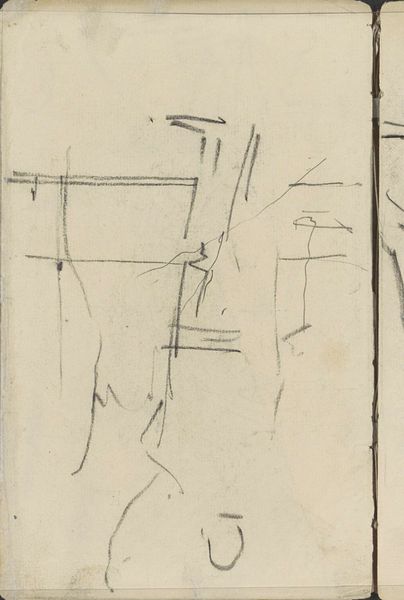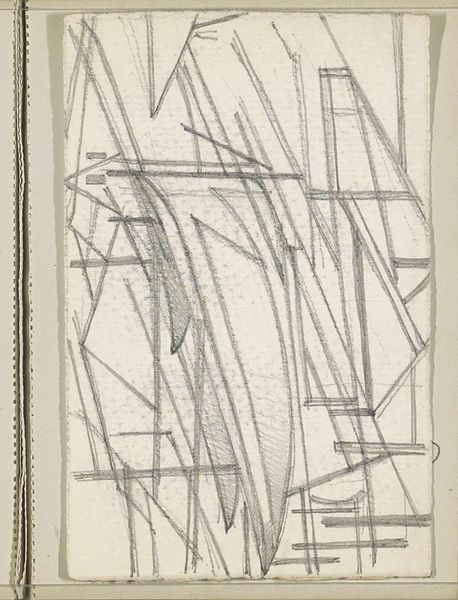
drawing, paper, graphite
#
drawing
#
paper
#
geometric
#
abstraction
#
line
#
graphite
Copyright: Rijks Museum: Open Domain
Curator: Here we have Gerrit Willem Dijsselhof’s "Studies", a drawing in graphite on paper, dating back to around 1901. It's currently held at the Rijksmuseum. Editor: Immediately, it feels like seeing the skeleton of something, an under-drawing maybe? There’s a stark, almost clinical quality to the geometric lines scratching across the paper. Curator: Absolutely. Looking at this piece, the deliberate use of graphite jumps out. Graphite, easily sourced, relatively inexpensive even then, hints at the democratized possibilities of artistic creation at the time. A readily available industrial byproduct becoming the genesis of an artistic thought, so to speak. Editor: Interesting… the looseness is what gets me. It feels almost urgent, like catching an idea before it fades. Are these studies for something larger, perhaps? Curator: Potentially. Given Dijsselhof’s wider output and his ties to decorative art and design, it’s possible these were preparatory sketches. Consider the context; early 20th century, increasing industrialization and the rise of abstraction. These simple lines and geometric shapes push against representational norms. Editor: It's wild to think these raw geometric shapes lead to some gorgeous Art Nouveau wallpaper or furniture! It is, I think, in some ways the magic that transforms industrial plainness into beauty and fine arts. You know, this drawing has a weird feeling of both being finite, a clear single page ripped out of some book and still, somehow, be limitless. It feels, unfinished, to be frank. Curator: Exactly! This "unfinished" quality makes us, the viewer, active participants. We're asked to complete the process of creating in our minds, and also, yes, to imagine what possible products could emerge out of those primitive shapes. The line itself takes centre stage – not as descriptive, but as constructive. Editor: I am sure someone must have once seen this as a boring scribbling on a random paper, but looking at those elementary sketches, the thought process and material interaction suddenly shine and resonate across centuries. Curator: Indeed. "Studies" offers an understated but poignant snapshot into an artist's evolving process, a kind of democratization of art creation via abstraction through labor. A rare glance into where the seed of creative invention starts to grow. Editor: It certainly invites a meditation on process – artistic, industrial, or even intellectual. Thanks for shining a light on those possibilities!
Comments
No comments
Be the first to comment and join the conversation on the ultimate creative platform.
